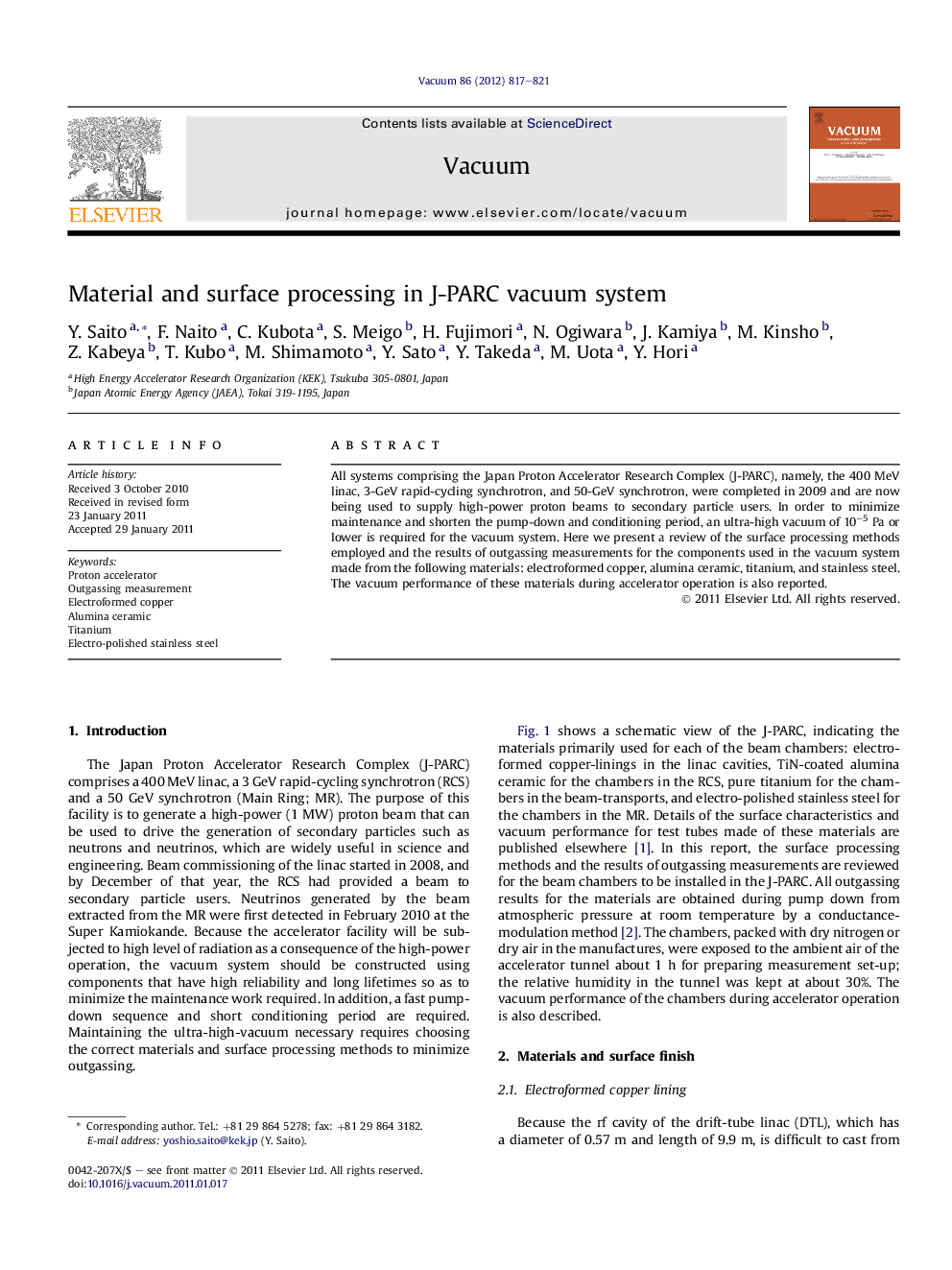| Article ID | Journal | Published Year | Pages | File Type |
|---|---|---|---|---|
| 1690506 | Vacuum | 2012 | 5 Pages |
All systems comprising the Japan Proton Accelerator Research Complex (J-PARC), namely, the 400 MeV linac, 3-GeV rapid-cycling synchrotron, and 50-GeV synchrotron, were completed in 2009 and are now being used to supply high-power proton beams to secondary particle users. In order to minimize maintenance and shorten the pump-down and conditioning period, an ultra-high vacuum of 10−5 Pa or lower is required for the vacuum system. Here we present a review of the surface processing methods employed and the results of outgassing measurements for the components used in the vacuum system made from the following materials: electroformed copper, alumina ceramic, titanium, and stainless steel. The vacuum performance of these materials during accelerator operation is also reported.
► Surface processing for outgas reduction is applied to materials for accelerator use. ► Electro-formed copper of high purity is plated on rf cavity surface. ► Alumina ceramic chambers for avoiding eddy current effect are manufactured. ► Titanium material is adopted for use as bellows and beam chambers. ► Electro-polished stainless steel is pre-baked prior to installation.
